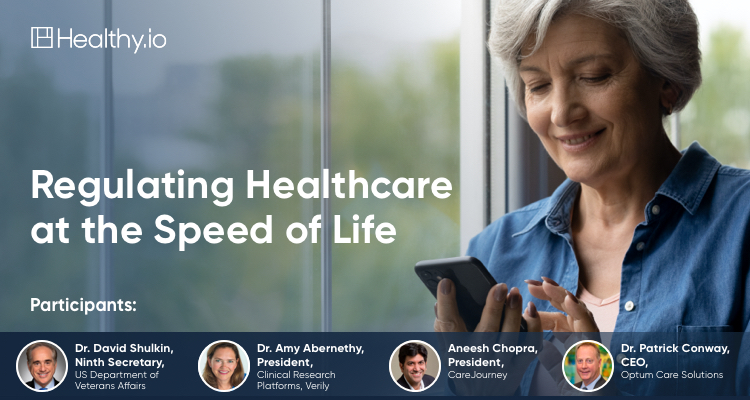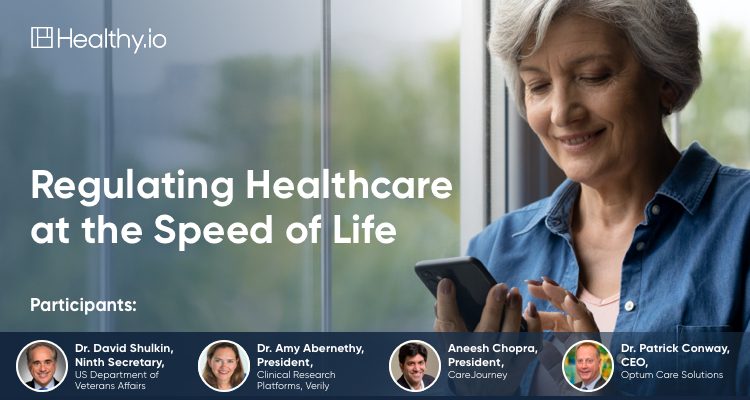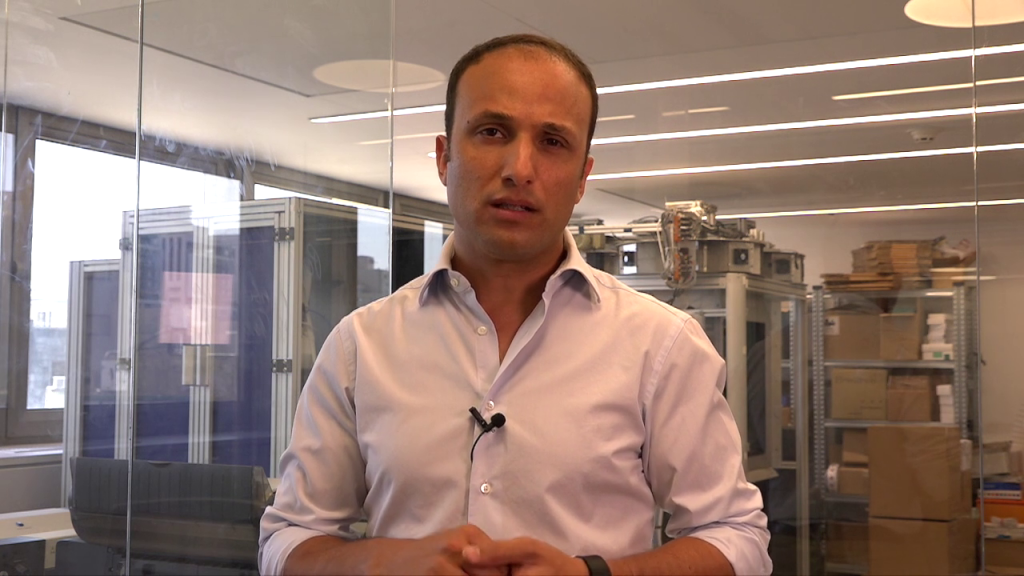Regulating Healthcare at the Speed of Life
Faced with the challenges of the COVID-19 pandemic, the greatest minds in science and technology created solutions that have made virtually all of our lives better. The ways in which major regulatory agencies quickly responded to accommodate that wealth of solutions received markedly less attention. But without that flexibility, most doctors could not easily conduct remote appointments with their patients. There would be no emergency use authorizations for vaccines. Our lives would be very different.
The course eventually taken by events was shaped by the complicated and vital interactions of private and public entities working to quickly make safe, high-quality solutions available to the public. It’s time to take stock of what was learned—and what it all means going forward.
Healthy.io recently partnered with Business Insider to host Regulating Healthcare at the Speed of Life. The event explored the ways that the public and private sectors can work together to facilitate innovation, and featured a remarkable panel of industry experts with first-hand experience in both government and industry.
The event was hosted by Dr. David Shulkin, the ninth secretary of the US Department of Veteran Affairs. The panelists were:
- Dr. Amy Abernethy, President, Clinical Research Platforms at Verily, and Former Principal Deputy Commissioner and Acting Chief Information Officer, US Food & Drug Administration.
- Aneesh Chopra, President of CareJourney and Former First US Chief Technology Officer.
- Dr. Patrick Conway, CEO of Optum Care Solutions and Former Deputy Administrator, Innovation and Quality, Federal Centers for Medicare and Medicaid Services, and Director and Chief Medical Officer, Center for Medicare and Medicaid Innovation.
Here are some key takeaways from the event:
Pandemic Lessons
In the early months of the pandemic, regulators exhibited remarkable flexibility with respect to telehealth, facilitating the surge in remote care. Dr. Patrick Conway said that he predicts the societal shift to remote care will continue, and could be the harbinger of more change in the wake of regulatory action. “When we created regulatory flexibility, I think you saw the provider care system and others respond in really innovative ways to drive change,” he said. “I think there’s an underlying lesson there: that’s always a balance [of rigidity and flexibility], but it’s a thumb on the scale to regulatory flexibility.”
The need to make tough decisions during a highly dynamic crisis illustrated to Dr. Amy Abernethy just how important data is to good decision-making. “We have sophisticated analytics, whether that’s artificial intelligence, business analytics, etc., that could leverage data if it were available,” she said. “But interoperable information that allows us to make data-informed decisions every day was one of the critical needs of the pandemic. And I think we’re going to see a number of policy changes going forward to try and address that in the future.”
Moving Fast Without Breaking Things
Could the unprecedented speed that characterized COVID-era regulatory processes become a mainstay going forward? Dr. Abernethy said that the pandemic offered a useful test case that can be examined through three aspects. “Did this regulatory flexibility impact human health and safety in a negative way? That tells us whether regulatory flexibility should be pulled back,” she said. “Was there some impact on data integrity—the data needed to make thoughtful decisions about the effectiveness of a medical product? The third aspect is the impact on patients as consumers as it relates to quality of life, ease, and other aspects. But I think safety and effectiveness will be prioritized in making those decisions about regulatory flexibilities into the future.”
Bigger Isn’t Always Better
Countless success stories have shown how the best small health companies can use their nimbleness and innovative, iconoclastic mind-set to great effect. Dr. Patrick Conway, CEO of Optum Care Solutions, said that larger companies have taken note. “If we can partner with a smaller organization, co-create to drive the change in innovation we need, it can actually be mutually beneficial and we would encourage large organizations to do that as well,” he said.
And while smaller companies can find themselves at a disadvantage when dealing with regulators, Dr. Abernethy, herself a former senior FDA official, highlighted several elements that can help level the regulatory field. “A key aspect is to really get to know the agency that’s regulating your space and understand the agency’s responsibilities and how it makes decisions,” she said. “Finding mechanisms that you can interact directly with other companies in your space and regulators in the space is also important. That can happen through a variety of public-private partnerships. For example, when I was at FDA, we set up something called the COVID-19 Evidence Accelerator that allowed new entrants from the health-tech space who had data or analytic solutions to come together with larger companies and government researchers, to work together to solve problems in the context of COVID-19. Those new companies also got a chance to see how regulators think and got a look in that was equal to what larger companies got.”
Governing Towards Innovation
The government’s role in shaping the future of healthcare technology extends far beyond its duties as a regulator. Aneesh Chopra, who served as the first Chief Technology Officer of the United States, pointed out that the government is also a major healthcare investor. “Medicare is one of the largest payers of health care and sets a lot of the market dynamics. What gets reimbursed and at what level in our fee for service system has long been a debate. When can we get more technologies added to the ‘formulary’, and will Medicare cover it or not?” he said. The answer can be found in the move to value-based care, where more decisions regarding what sort of care to deploy are made by the providers themselves. “I think you’ll find the pace of adoption may largely follow the flexibility of payment models, where it’s less about micromanaging a specific fee for service skew and more about enabling trusted use of a portfolio with obvious backstops to measure quality and impact. That to me is where I think the biggest role of government will be,” he said.
Overregulation Is in the Eye of the Beholder
During the event, Dr. Shulkin shared a poll with the virtual attendees, asking them to vote on whether the FDA was over-regulating in the digital health space. 46% answered in the affirmative, while 54% said there was no overregulation. “Like most things in this country,” Dr. Shulkin noted, “we’re split almost half and half.”
For more insights from the event, view the full recording below:






